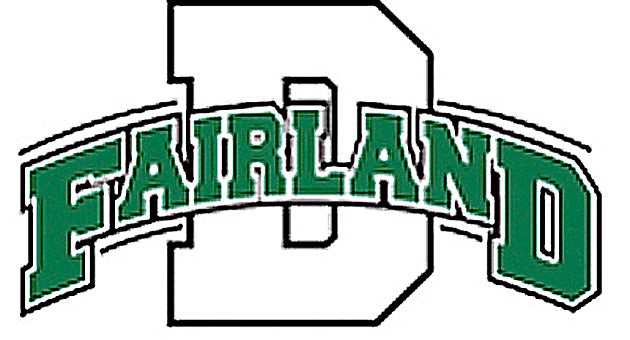Field of Dreams
Published 10:36 pm Saturday, August 1, 2009
IRONTON — “Business and Industry.” No three words mean more to the city of Ironton’s future. They are three words that are the lifeblood of any community.
Business and industry provides the foundation of how a city operates and what services it can offer its residents. The more business and industry a city has, the more income tax it collects which in turn results in increased services.
All cities want to welcome new business with open arms and hang on to existing business and industry. Business and industry also contributes to additional sales and property taxes.
Even in a political powder keg like Lawrence County where politics factor into even the smallest decisions or personnel hires, politicians from both parties have enough savvy to observe a tacit agreement that they will fight about almost anything else, but business and industry are mostly beyond the reach of partisan wrangling.
Politicians seek business and industry because shopping centers, factories and office buildings provide a solid tax base on the revenue side of the ledger without adding children to the city or village’s population on the other side.
From a taxation point of view, residential development is less desirable than business development.
Non-residential growth profits a city or village because it contributes more in taxes than it demands in services while residential growth demands more in services than it contributes in taxes.
Plus non-residential growth creates jobs, which further increases the tax base.
So in the case of the city of Ironton, where would new business go if they had an interest of starting up or relocating to the gateway to southern Ohio?
Sure there are plenty of empty storefronts and buildings available for small businesses. But what about a larger business that needs several acres of land, interstate access and maybe even a building available for conversion?
For those prospects, industrial parks offer a viable and many times, economic option. And on the south side of Ironton sits a 23 acre parcel bordering Lorain and South Third streets ready for a wide range of development.
But nearly seven years after the property was purchased by the city and four years after the city deeded it to the Ironton Port Authority, the Ironton Industrial Park sits nearly vacant with no imminent signs of major development.
Why? Well, like the thunderstorms that have hovered over the region in recently weeks, a dark cloud of broken promises, poorly-drafted agreements and imbalanced competition seems to linger over the property.
It is a parcel that patiently sits waiting to be put to use — waiting for its ground, not its purpose, to be broken.
Open Spaces
Just on the other side of the barbed-wire, chain link fence that surrounds much of the property, shimmering blades of grass and violet-colored wildflowers serve as a sanctuary for the thousands of bumble bees looking for a safe place to gather nectar.
Dozens of sparrows rest on power lines strung from a lonely utility pole to the Ohio Department of Transportation Highway Garage that occupies the northwest corner of the industrial park.
Across Commerce Drive from the ODOT building rests two dozen trucks and heavy equipment taking a needed break from hours of reconstruction on U.S. 52. The dead end of the to-be-completed access road serves as a rest area for a pair of Shelly and Sands portable water trucks.
Facing South Third Street, workers pour the foundation of a building to be used for the relocation of Cooke’s Farm Center from its longtime home on State Route 141.
In late 2008, the IPA sold to Cooke’s industrial park land that bordered the former Robert’s Greenhouse site when Cooke’s agreed to sell its property on the other side of town for the construction of the proposed St. Mary’s acute care center.
Further into the industrial park, lies more than 100 damaged and collapsed orange and white-striped traffic barrels that are on injured reserve for the rest of the road construction season. Just beyond them sits a white Nikki’s Seafood delivery truck advertising its selections to the vast industrial park.
Down the gravel road to the right sits the 4,000-square-foot building Aluminastic Corporation has called home since 2006. Beyond that, and on three additional acres across South Third Street, sits acreage lush with foliage and grasses, but mostly void of business.
But how is it that 23 prime acres sits nearly empty of any type of major business development?
One only has to look at the property’s former tenants and the legal stranglehold they have on the land nearly 25 years after leaving town and seven years after outright selling their interest in it to the city.
Not giving up the past
It has essentially been 25 years since Honeywell dissolved its operations in Ironton, however the multinational company really has never left the city.
Even in 2009, the company still has considerable influence, especially regarding the Ironton Industrial Park, according to Ironton Economic Development Director Bill Dickens.
Since the property was cleaned and detoxified as part of the federal government’s Superfund program, Honeywell and its subsequent merger with AlliedSignal looked to rid themselves of the site — with one major caveat — influence on who would build on it in the future.
In 2002, they got their wish when the city of Ironton themselves paid $375,000 with a combination of city monies and state grants to buy the property. However, the land was not the only item the city inherited that August day.
As part of the closing sale, the city and Honeywell inked a “Special Warranty Deed” that prevented the city from selling, transferring, leasing or subleasing any part of the property unless it received the blessing of Honeywell.
That agreement is still in effect today.
While the exact reasons the city agreed to the deed are unclear, much of it revolves around liabilities the property has in being a former toxic waste site. In fact, no company in American history has been linked to a greater number of Superfund sites that Honeywell.
“The restrictions of the agreement with Honeywell has encumbered us,” Dickens said in explaining a late-stage proposal the IPA recently had with a Utah-based company that was nixed after Honeywell objected.
But if it seems that a rare objection from Honeywell’s New Jersey headquarters is the only hurdle the industrial park has to clear, think again. Some of those hurdles are right in its back yard.
Too close for comfort?
Ten miles to the southeast of the Ironton Industrial Park on U.S. 52 sits The Point, a 500-acre behemoth industrial park attempting to capture some of the same companies the Ironton Industrial Park wants to bring in.
However they have two huge advantages over Ironton in capturing new business, besides having more available land and even three-quarters of a mile in riverfront space.
The Point has the fast track for state funding for spec buildings and has a full-time staff behind it.
Rules implemented by the Ohio Department of Development allow only one site per county to receive state monies to build shell or spec buildings that prospective businesses can easily transform. Currently those funds have all gone to The Point while Ironton has been left on the outside looking in for the past seven years.
“When you have available buildings that are established, it becomes very stiff competition,” Dickens explained on The Point’s current advantage.
That could change here in the next year or so.
Twice in the past four months, letters from both the Lawrence Economic Development Corporation and Lawrence County Commissioners have been sent to the Ohio Department of Development asking for a variance in funding caps.
The request has yet to be acted on.
Also, with the Ironton Port Authority as owners of the Ironton Industrial Park, the volunteer-appointed agency does not have a full time member devoted to the property like The Point has with director Jeremy Clay.
Dickens said that also “could be changing in future months.”
Future of business
All is not lost for the Ironton Industrial Park though.
Mi-De-Con, Inc. recently purchased property on the southern tip of the parcel to use as storage and interest still arrives frequently while the site is being marketed heavily, Dickens said.
The IPA is even in discussions with a major player in commercial real estate development. On August 5, the IPA will meet with officials from Grubb and Ellis to tour the site and discuss its options.
“The word is out there,” Dickens said. “The property is well engineered and is well suitable for construction.”
While not having Commerce Drive fully completed or not having sewer or utilities in many parts of the industrial park continues to be a hindrance without the block grant funds needed for construction, Dickens believes Ironton will find the right client or clients for the property.
“This property is very easy to develop,” Dickens said. “We have looked and continue to look at everything we can think of.”





